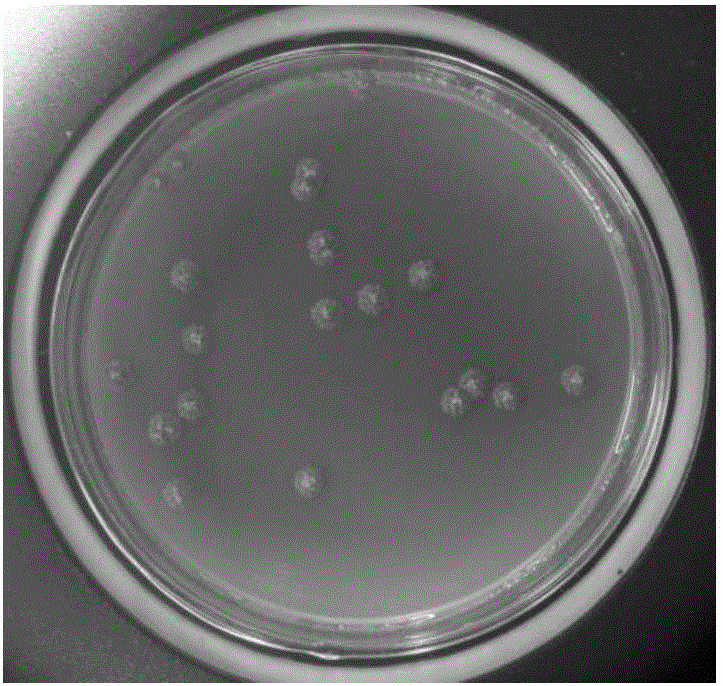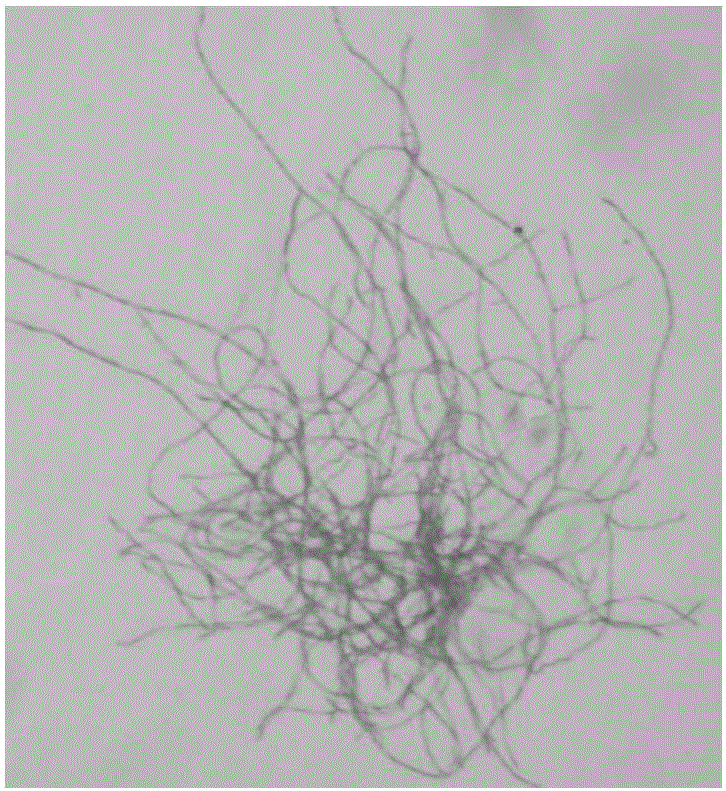Actinoplanes utahensis and application thereof in preparing acarbose
A technology of actinomycetes and acarbose is applied in the application field of preparing acarbose, which can solve the problems of low yield and many fermentation impurities, achieve less fermentation by-products, reduce difficulty, and stabilize production capacity Effect
- Summary
- Abstract
- Description
- Claims
- Application Information
AI Technical Summary
Problems solved by technology
Method used
Image
Examples
Embodiment 1
[0027] Example 1: The culture, physiological and biochemical characteristics and utilization of carbon and nitrogen sources of the strain with the preservation number CCTCC NO: M 2016237
[0028] 1. The morphological characteristics of the cultured strain with the preservation number CCTCC NO: M 2016237
[0029] Inoculate the strain with the preservation number CCTCC NO: M 2016237 on a solid medium and culture it at 26-30°C for 6-12 days, and observe the colony and mycelium morphology as follows: figure 1 , figure 2 shown.
[0030] CCTCC NO: M 2016237 strain was cultured on solid medium at 26-30°C for 10 days, the colony diameter was 3-4mm, orange-yellow, with regular round edges and a bulge in the middle. , there are water-soluble pigments produced. CCTCC NO: The hyphae of the strain M 2016237 are stretched in a net shape and do not produce spores.
[0031] 2. Physiological and biochemical characteristics of strains - utilization of carbon and nitrogen sources
[0032] ...
Embodiment 2
[0039] Embodiment 2: the influence of carbon and nitrogen source on fermentation titer
[0040] The strain with the preservation number of CCTCC NO: M 2016237 was used.
[0041] 1.1 Effect of carbon source on the potency of acarbose
[0042] 1.1.1 Effects of different carbon sources on the ability of acarbose synthesis
[0043] The carbon sources in the fermentation medium are glucose, maltose, lactose, sucrose, fructose, cornstarch, flour, soluble starch, dextrin, and glycerin as the only carbon sources, and the pH of the medium is adjusted to 7.2. . The bacterial lawn was picked from the solid medium with an inoculation loop and inserted into the above-mentioned various carbon source fermentation medium, and cultured at 28°C for 7 days at 250r / min, and the acarbose content in the fermentation broth was detected by HPLC.
[0044] Table 2 Effects of different carbon sources on the fermentation ability of acarbose-producing bacteria
[0045]
[0046]
[0047] The experi...
Embodiment 3
[0063] Embodiment 3: strain fermentation scale-up culture
[0064] The strain with the preservation number CCTCC NO: M 2016237 is used
[0065] 1. Shake flask seed culture
[0066] Medium: 0.7g maltose, 0.2g lactose, 0.3g flour, 3.0g cottonseed cake powder, 1.0g lysine, 0.5g calcium carbonate; add 100mL water, pH 7.0.
[0067] Filling volume: 100mL culture medium in 500mL triangular flask
[0068] Shake flask seed culture method: put the slant excavated into the shake flask seed medium, cultivate at a constant temperature of 27.5°C, and the shaking table rotates at 250rpm. It is reticulated and deeply stained, and the shake flask seed culture solution is transferred to the seed tank.
[0069] 2. Seed pot seed culture medium
[0070] Medium: 0.35Kg maltose, 0.5Kg fructose, 0.15Kg soluble starch, 1Kg yeast extract powder, 0.75Kg cottonseed cake powder, 0.25Kg calcium carbonate, add water 40L to 100L seed tank, pH 6.8, sterilize at 121°C for 30min The post medium volume is a...
PUM
 Login to View More
Login to View More Abstract
Description
Claims
Application Information
 Login to View More
Login to View More - R&D Engineer
- R&D Manager
- IP Professional
- Industry Leading Data Capabilities
- Powerful AI technology
- Patent DNA Extraction
Browse by: Latest US Patents, China's latest patents, Technical Efficacy Thesaurus, Application Domain, Technology Topic, Popular Technical Reports.
© 2024 PatSnap. All rights reserved.Legal|Privacy policy|Modern Slavery Act Transparency Statement|Sitemap|About US| Contact US: help@patsnap.com










